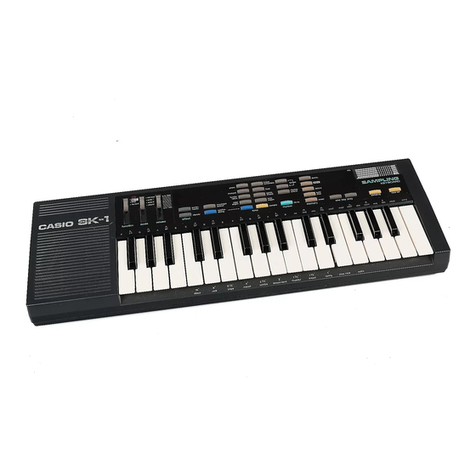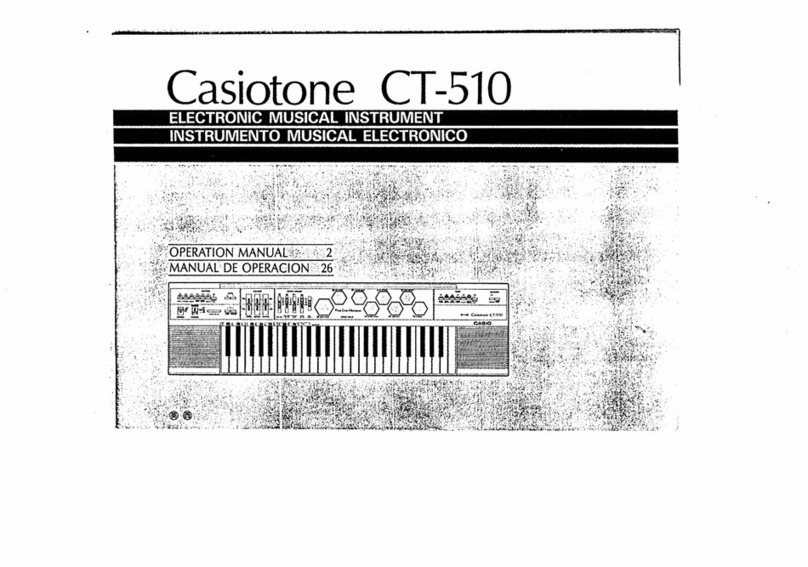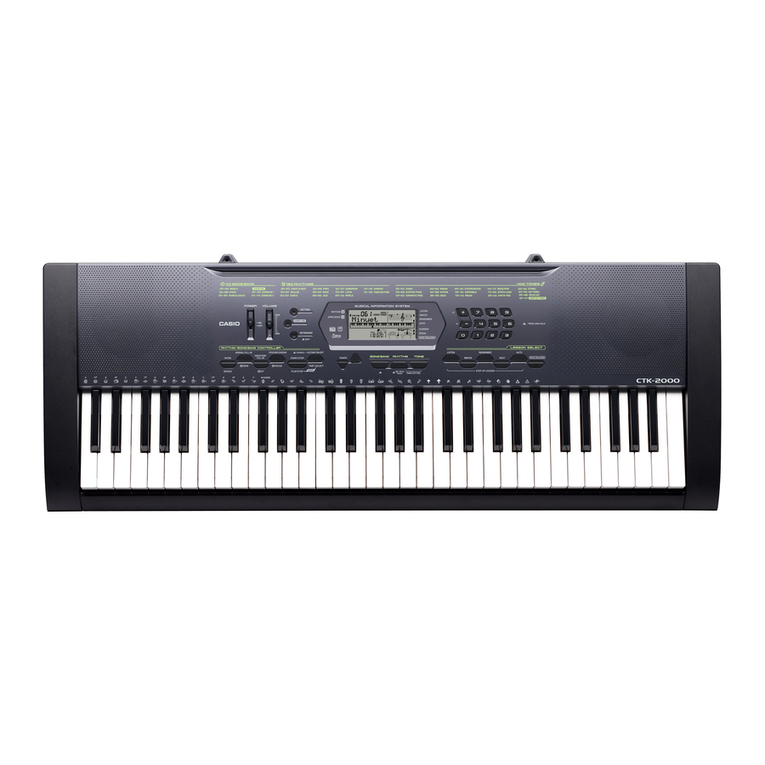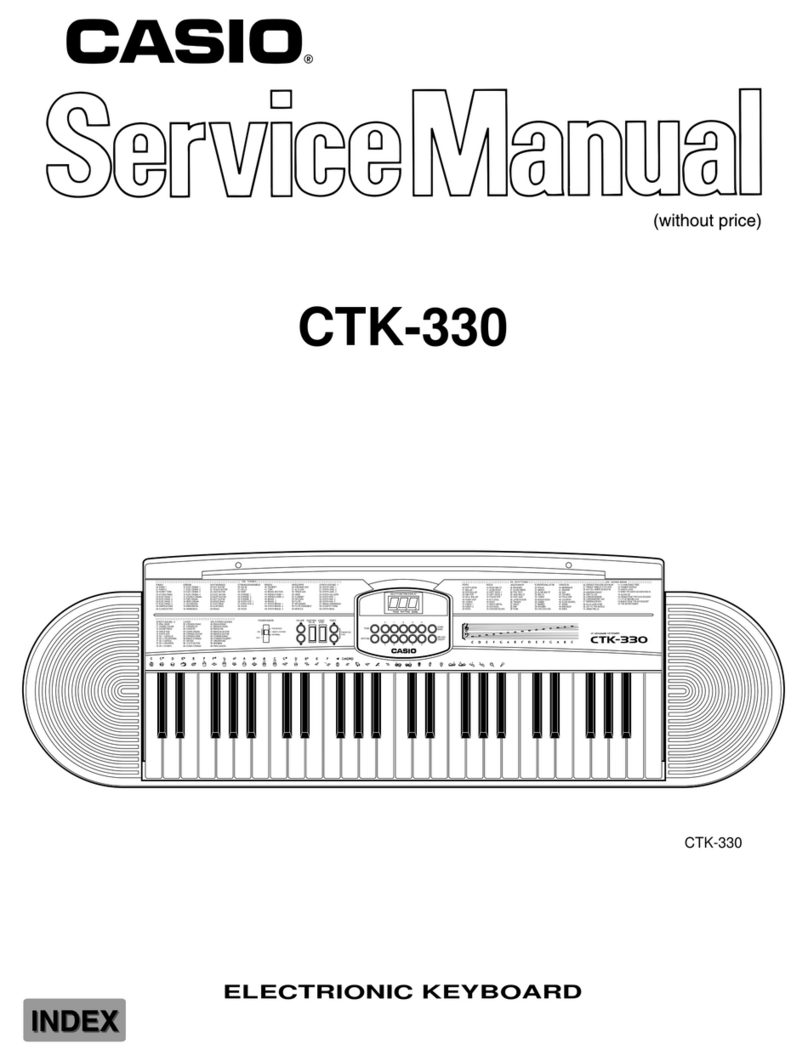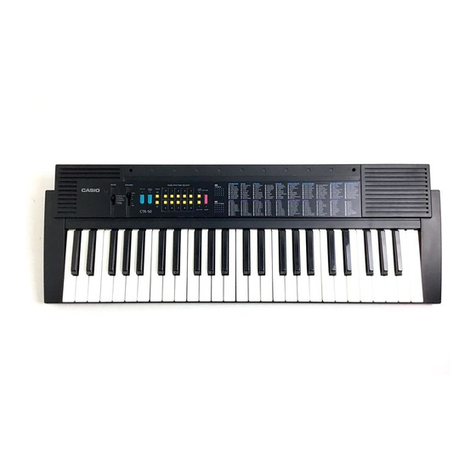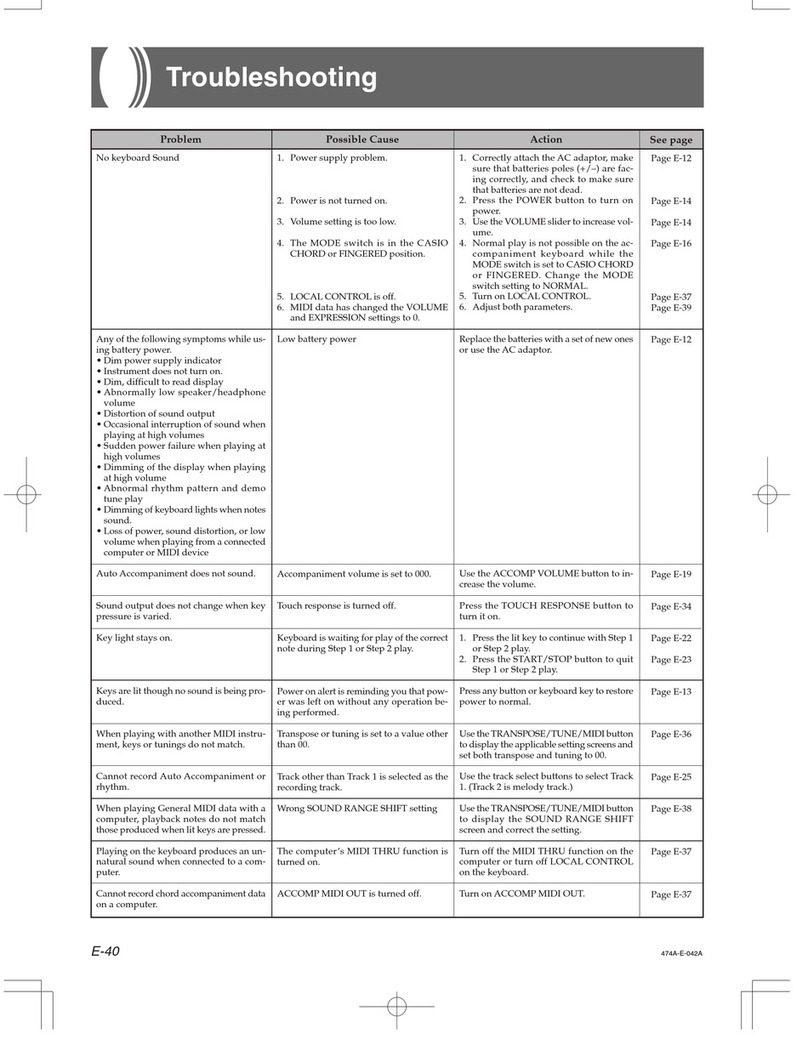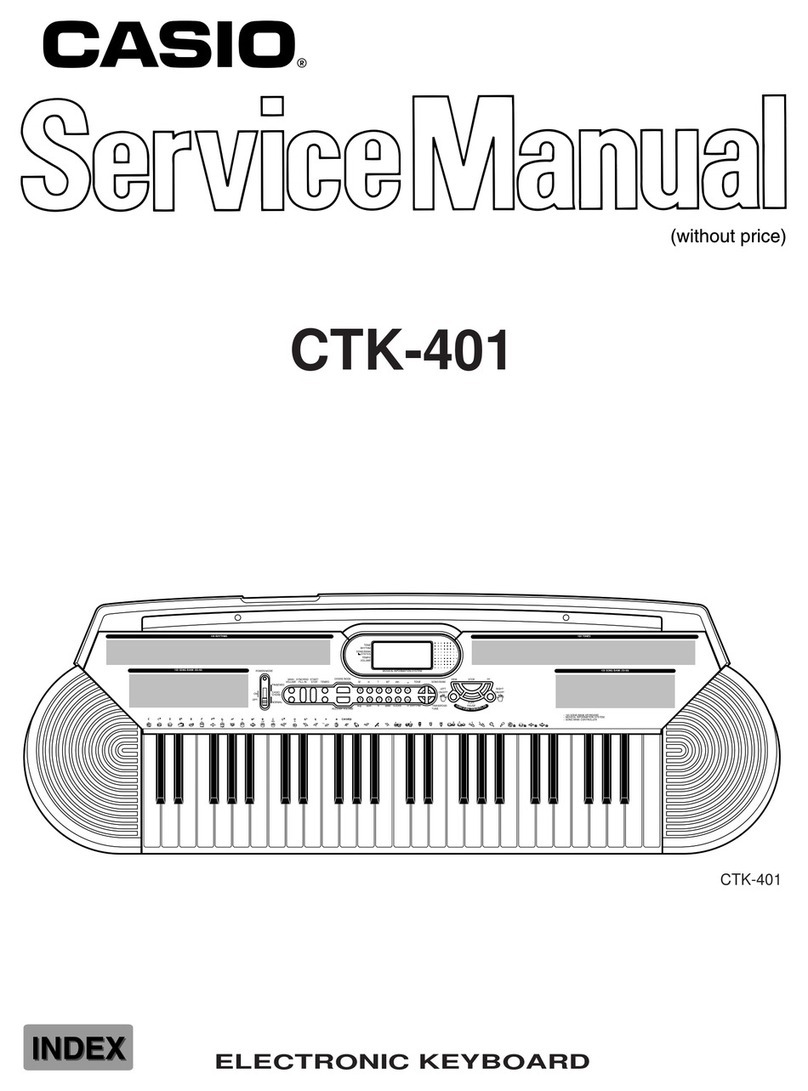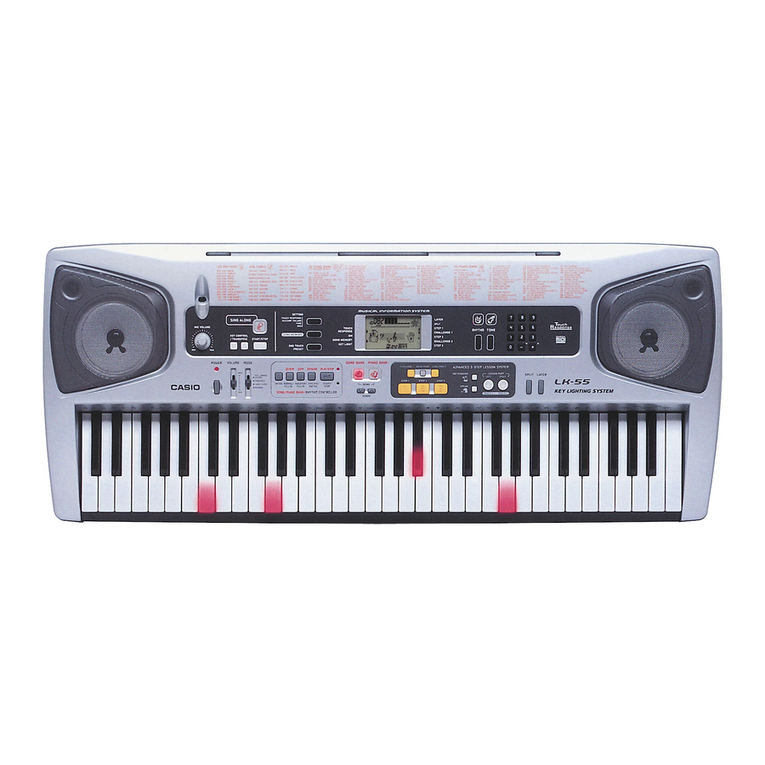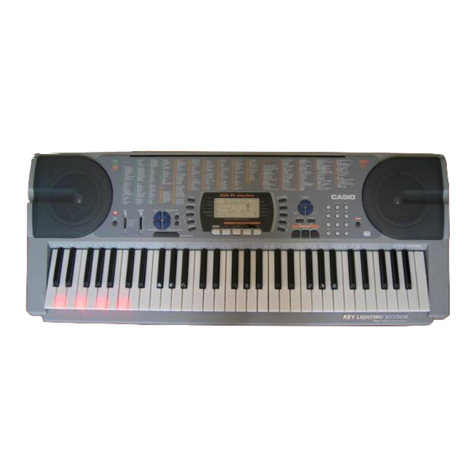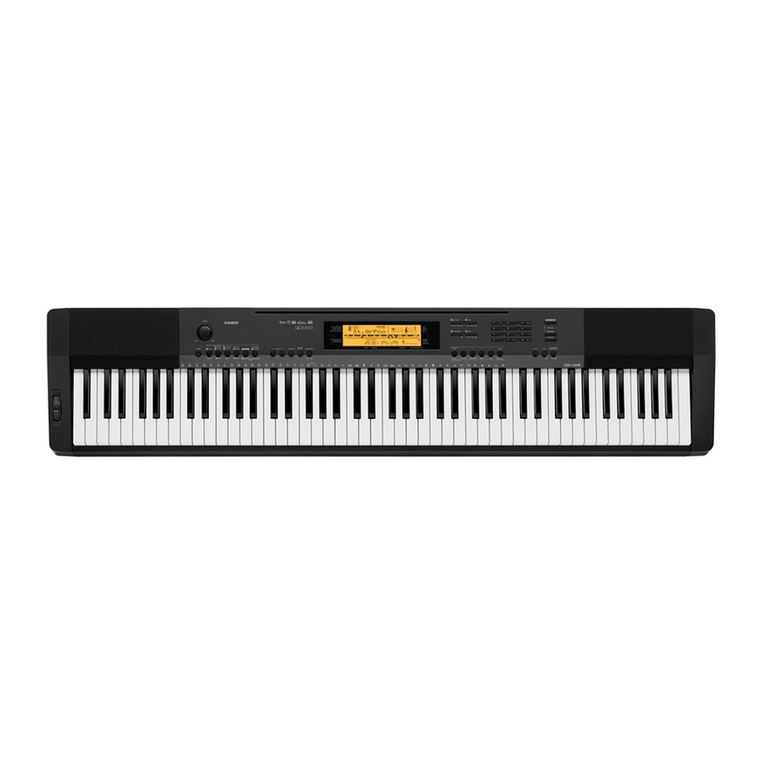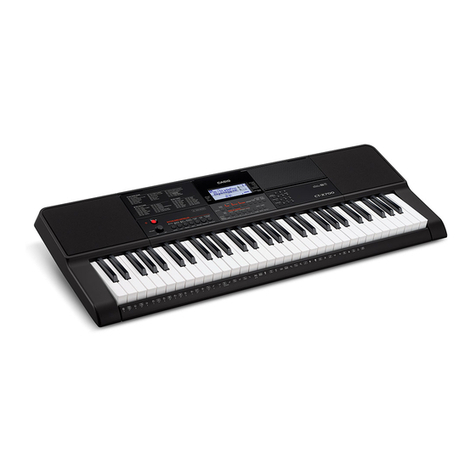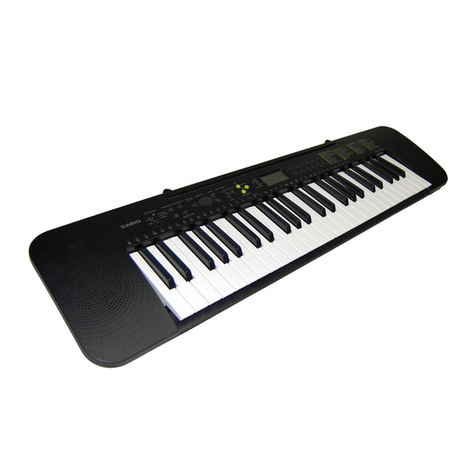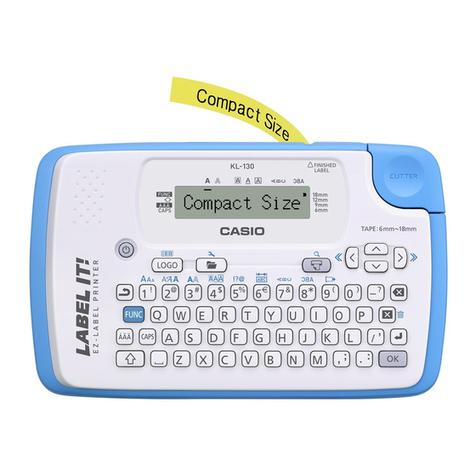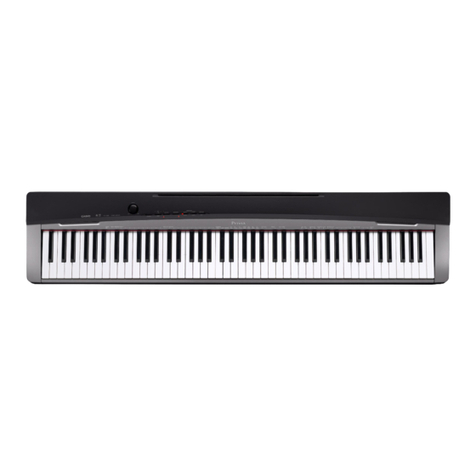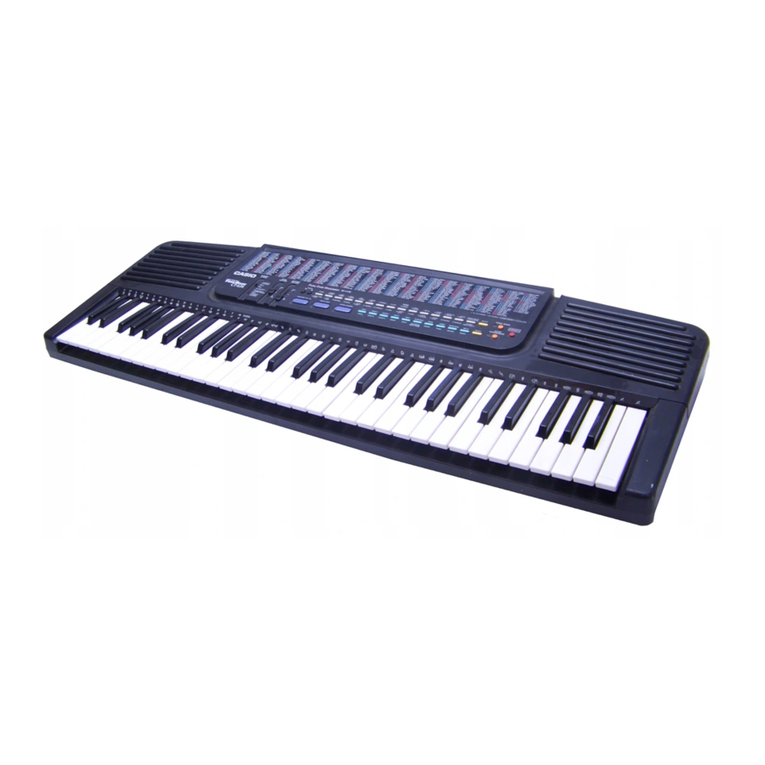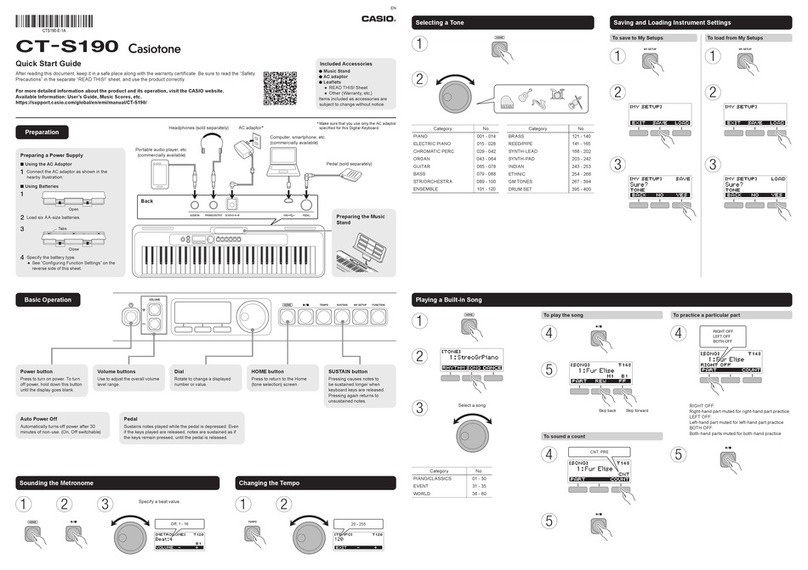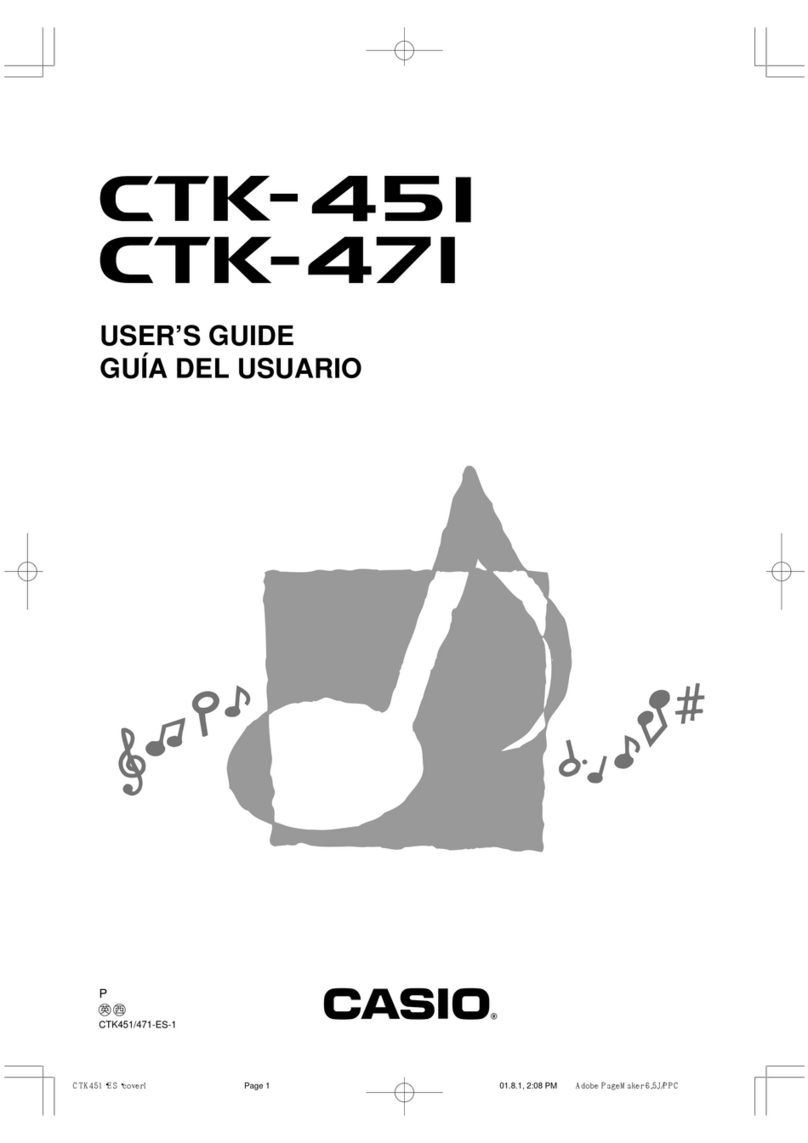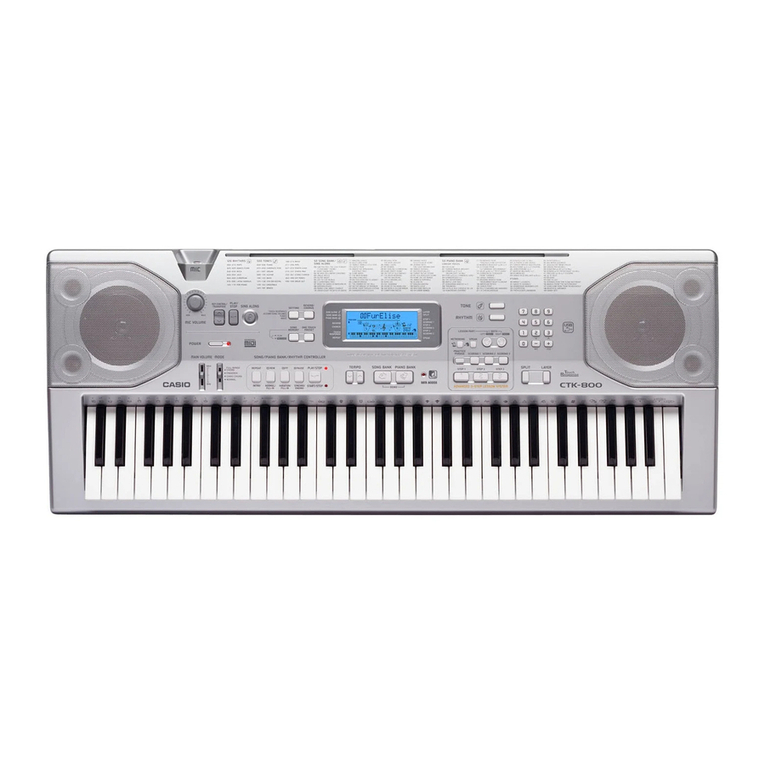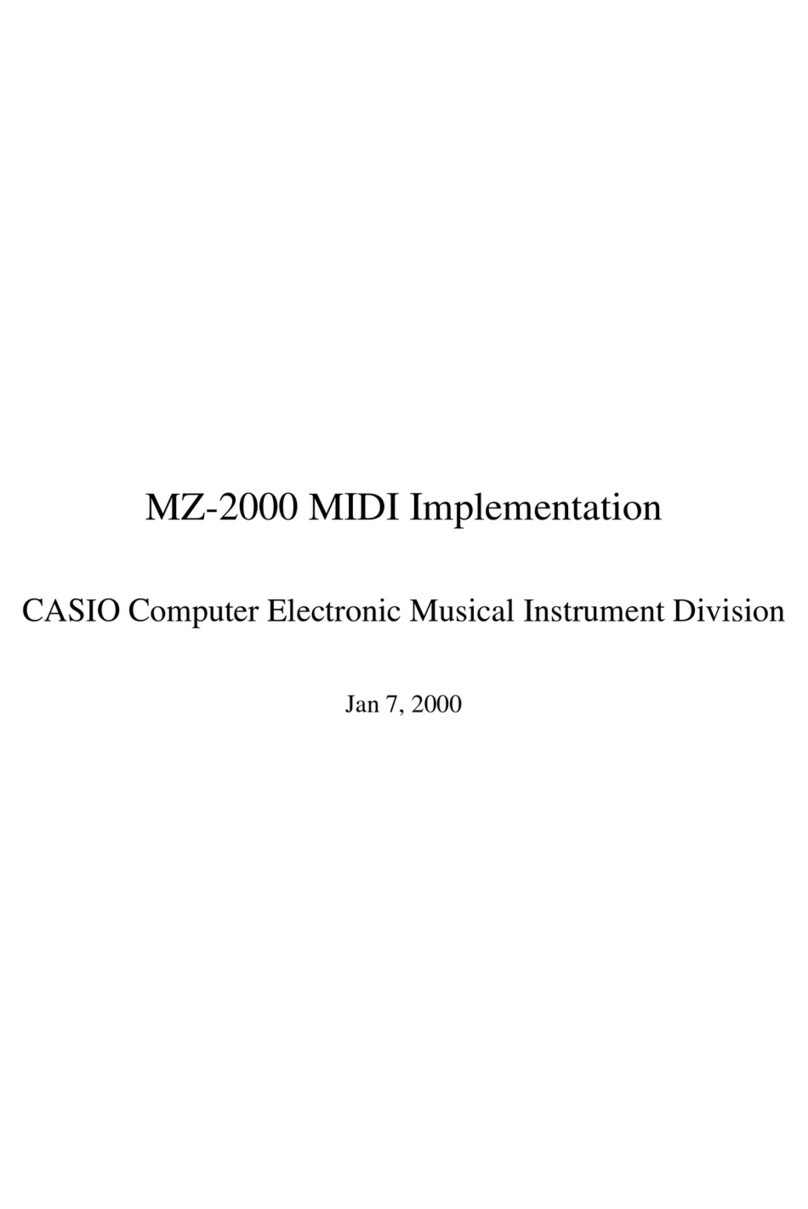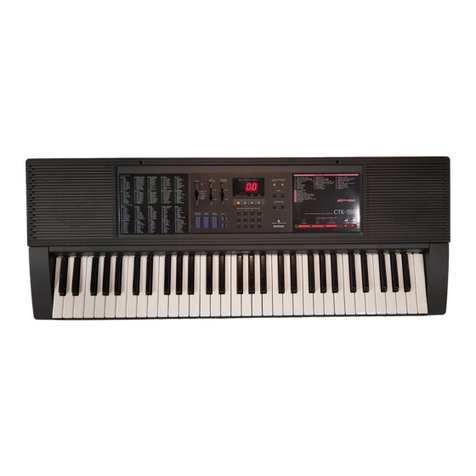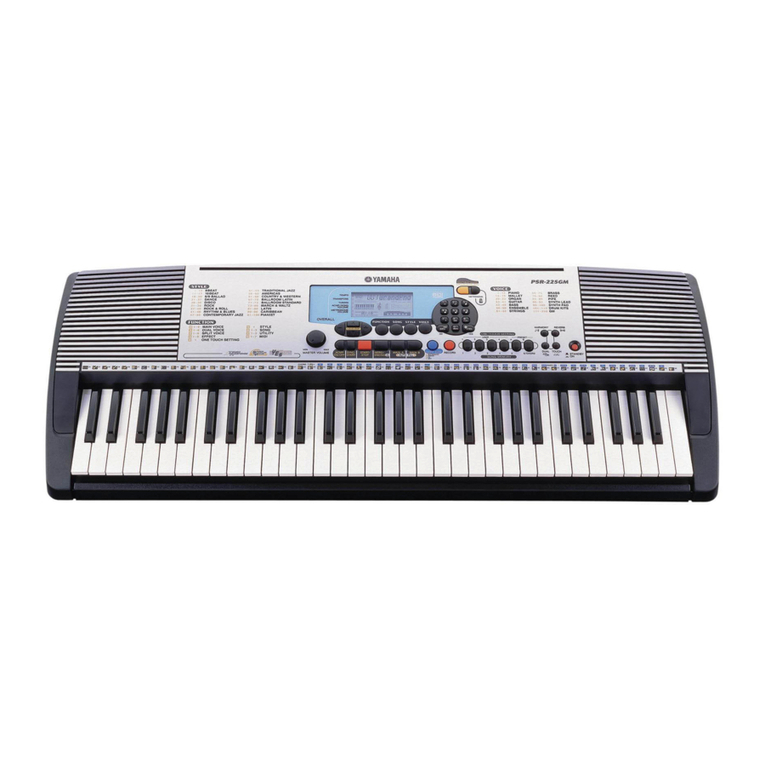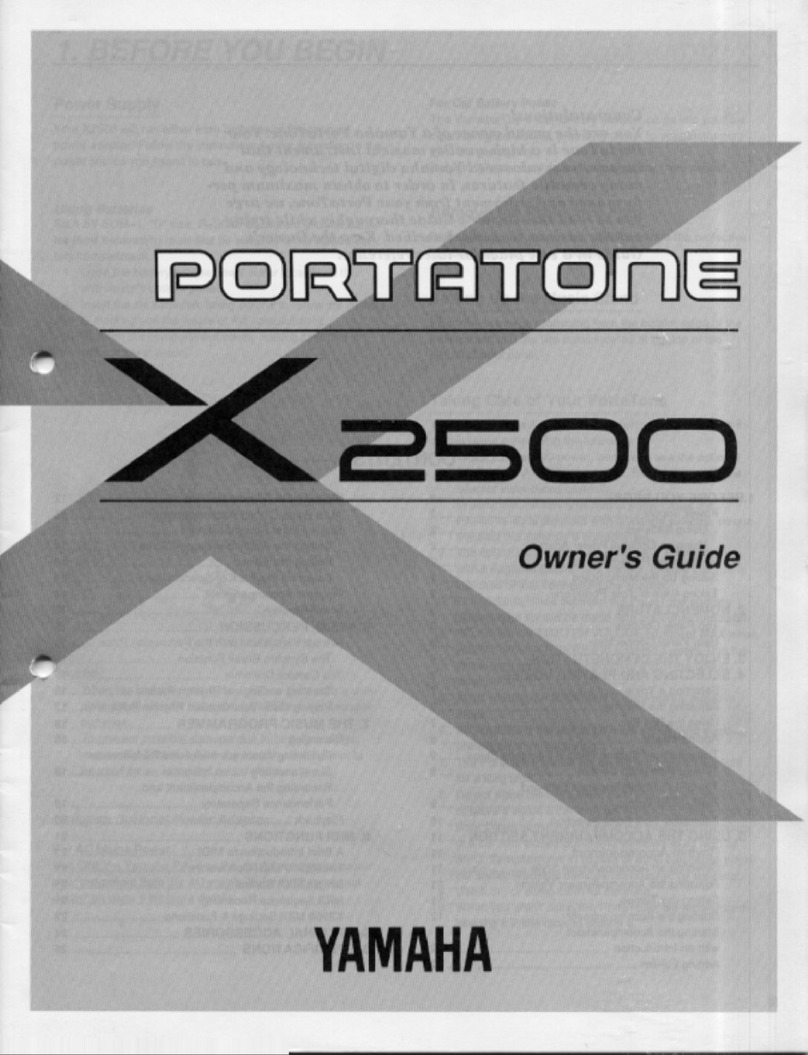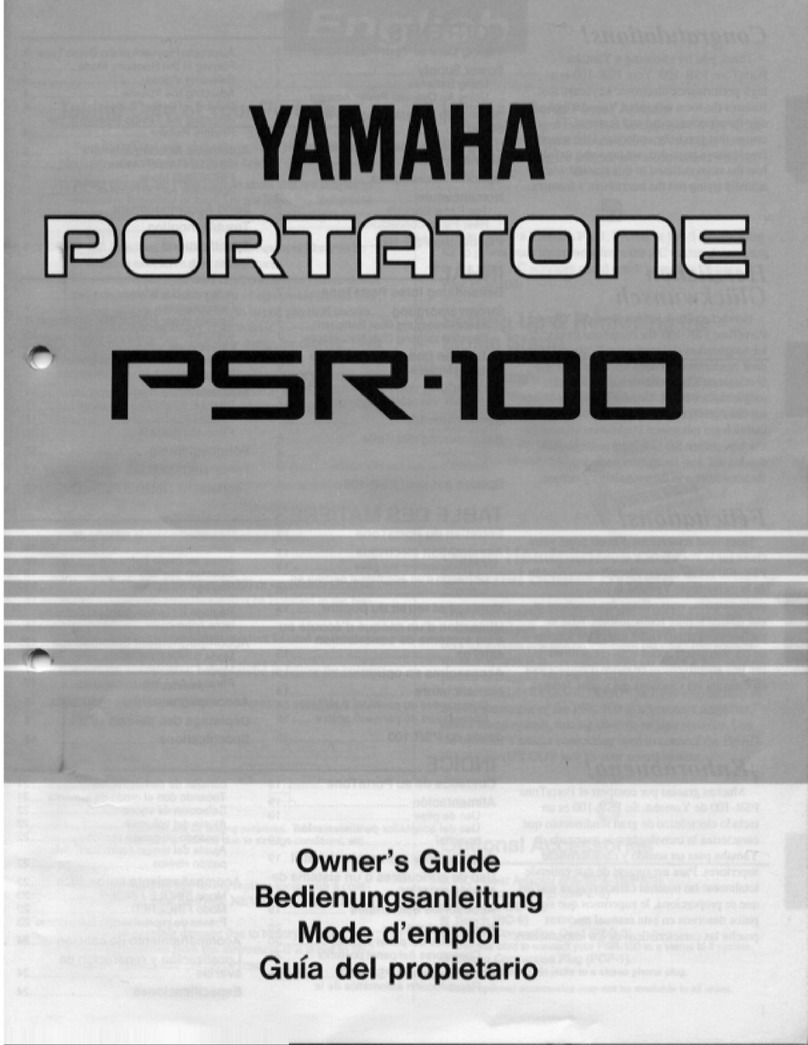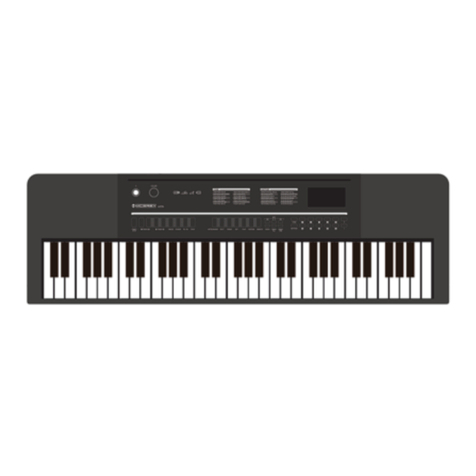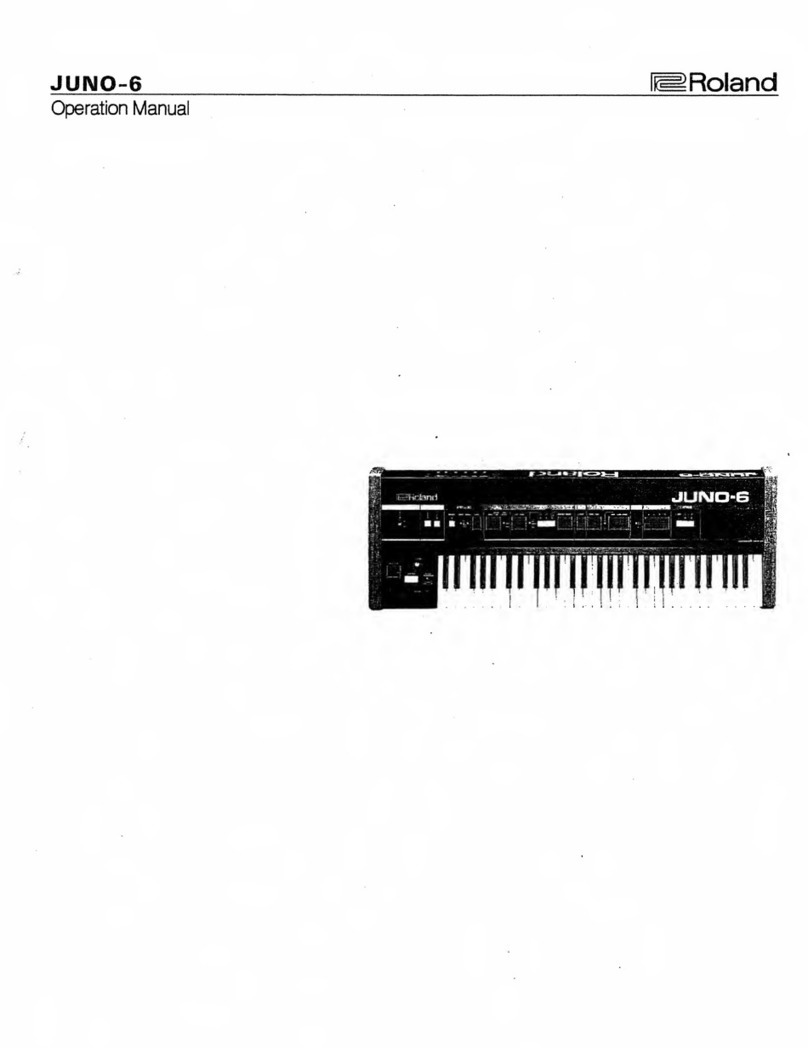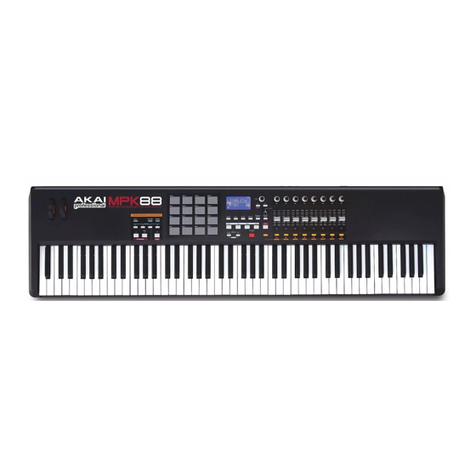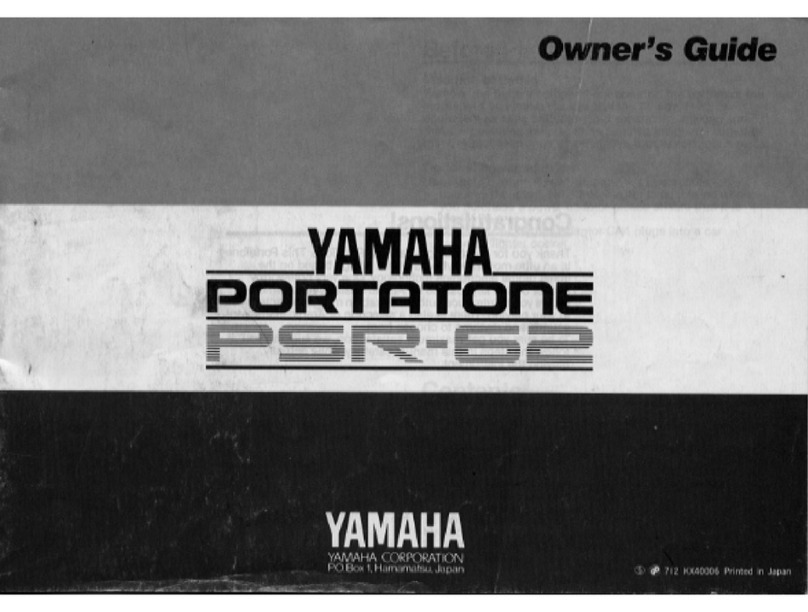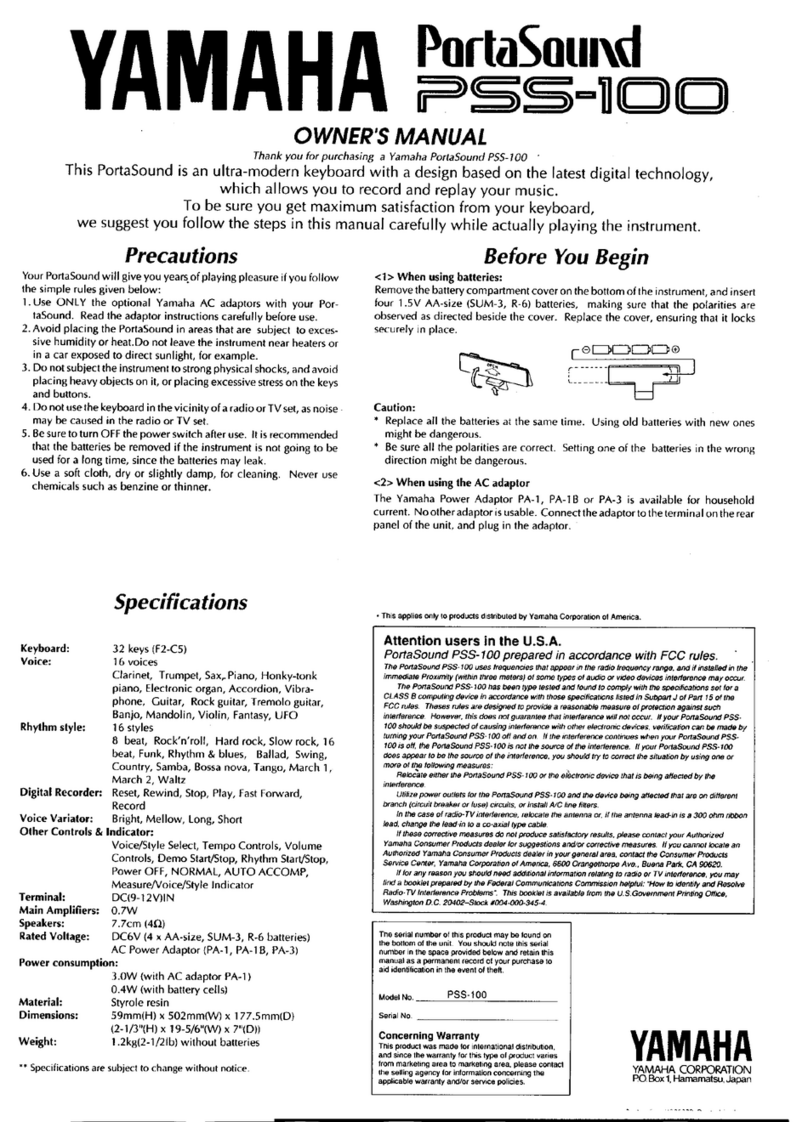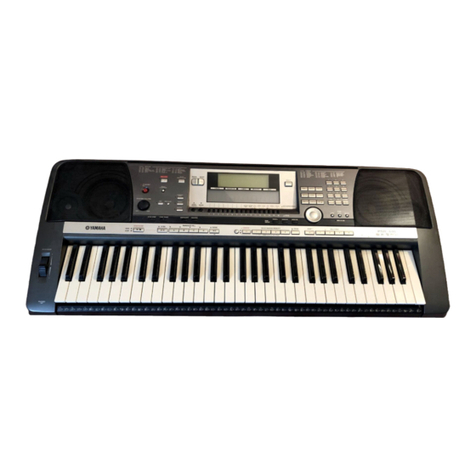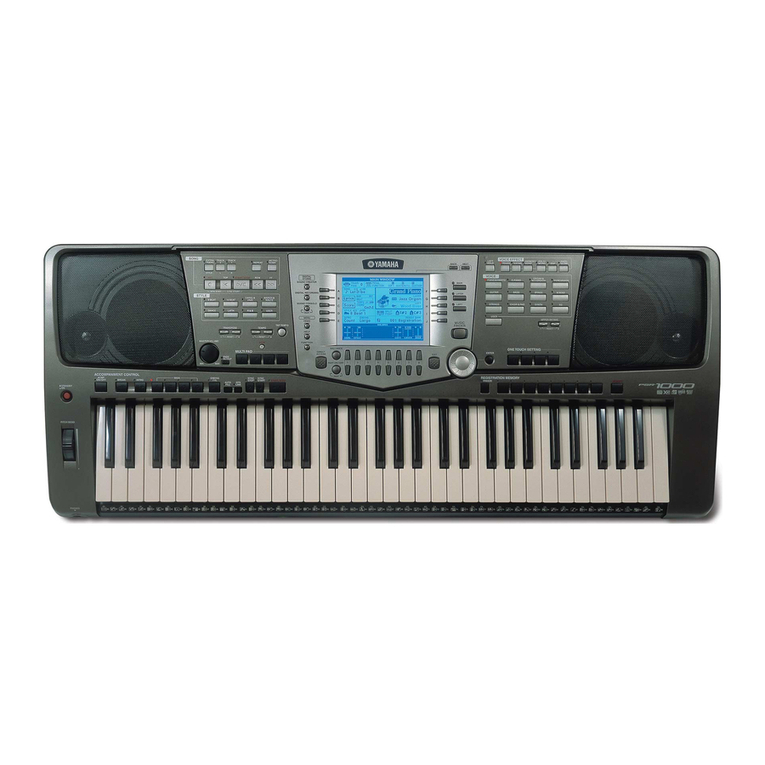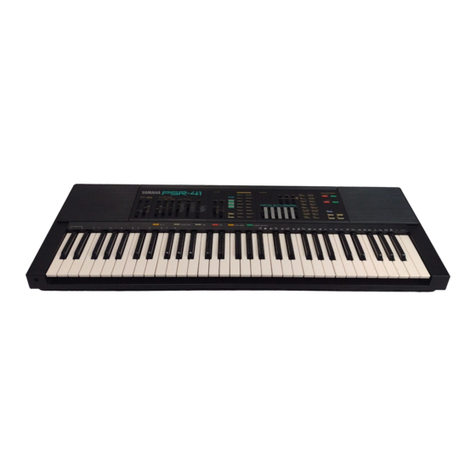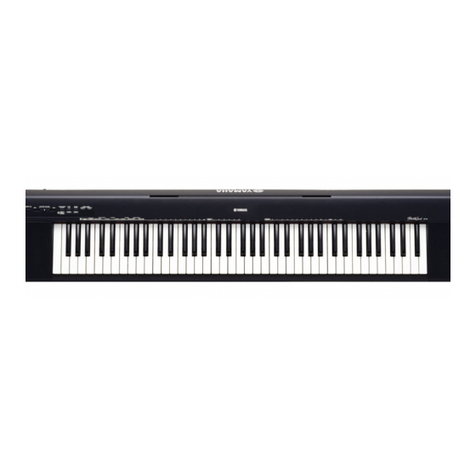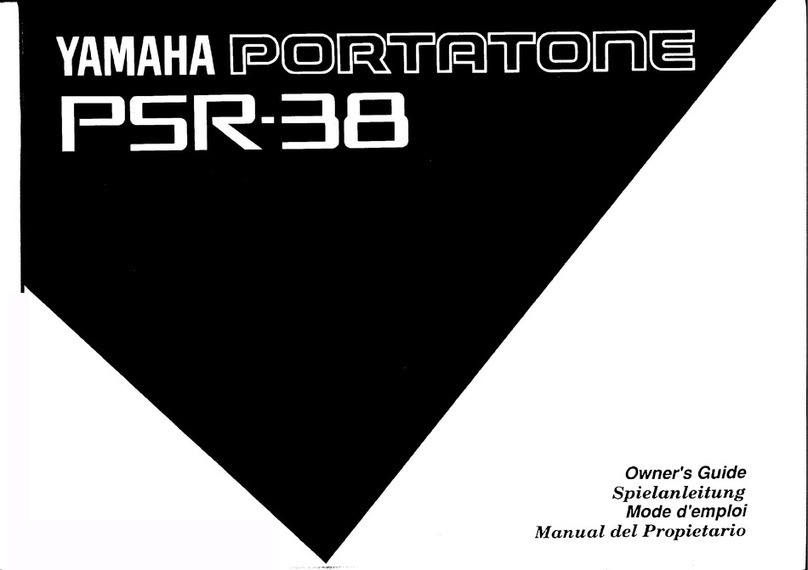
– 1 –
SPECIFICATIONS
Keyboard 88-key piano keyboard, with Touch Response (3 types)
Maximum Polyphony 128 notes
Tones 250 (with Layer and Split)
Effects Reverb (4 types), Chorus (4 types), Brilliance (–3 to 0 to 3), Acoustic Resonance
Metronome Beats per measure: 0, 2, 3, 4, 5, 6
Tempo Range: 20 to 255
Duet Adjustable tone range: 0 to 3 octaves for the left keyboard;
-4 to -1 octaves for the right keyboard
Auto Accompaniment Built-in Rhythms: 180
User Rhythms: Up to 10 (Approximately 40 KB* maximum per rhythm)
One Touch Presets: 180 types
Auto Harmonize: 12 types
Demo Songs 8 songs (tone demo songs)
User Songs Up to 10 songs (320 KB* maximum per song)
Music Presets Built-in Presets: 300
User Presets: Up to 50 (Approximately 8 KB* maximum per preset)
Registration (4 rhythm areas + 8 tone areas) × 8 banks
Recorder Functions: Real-time recording, playback
Number of Songs: 5
Number of Tracks: 17 (System Track + Tracks 01 through 16)
Capacity: Approximately 50,000 notes total (Up to approximately 10,000 notes per song)
Punch-in recording
Pedals Damper, Soft/Sostenuto (switchable)
Other Functions Transpose: ±1 octave (–12 to 00 to 12)
Tuning: A4 = 440.0 Hz ±99 cents
Octave Shift: ±2 octaves
Temperaments: 17 types
Stretch Tune
Panel Lock
MIDI 16 multi-timbre received, GM Level 1 standard
Pitch Bend Wheel Pitch Bend Range: 00 to 12 semitones
SD Memory Card SD memory card slot
Supported SD Memory Cards: Up to 2 GB
Functions:SMFplayback,lestorage,lerecall,cardformat
Inputs/Outputs PHONES jacks: Stereo mini jacks × 2
Pedal Jacks: Standard jacks × 2
MIDI OUT/IN terminals
LINE OUT R, L/MONO jacks: Standard jacks × 2
Outputimpedance:2.3KΩ
Output voltage: 1.8 V (RMS) MAX
LINE IN R, L/MONO jacks: Standard jacks × 2
Inputimpedance:9.0KΩ
Input voltage: 200 mV
Power: 12 V DC
USB port: Type B
Pedal connector (for optional SP-32 only)
